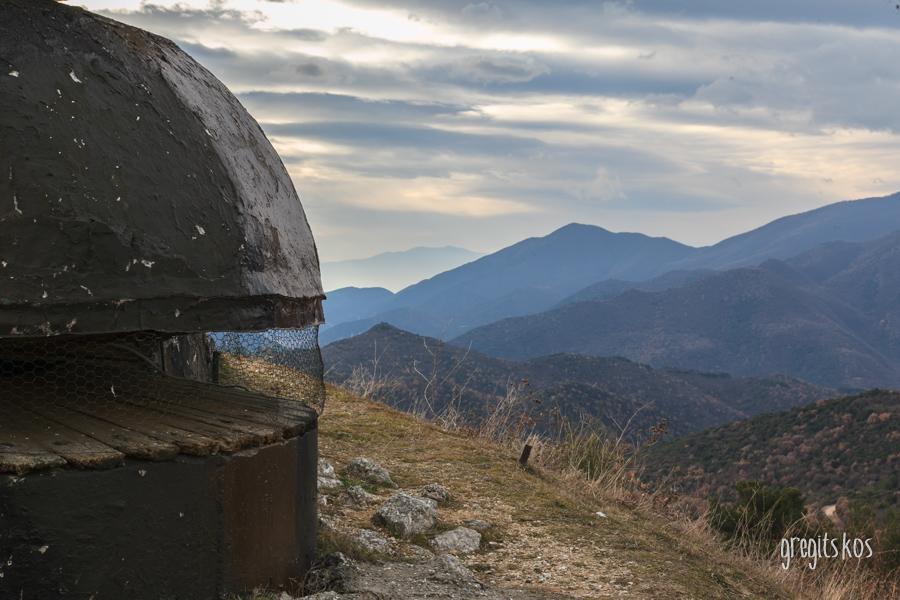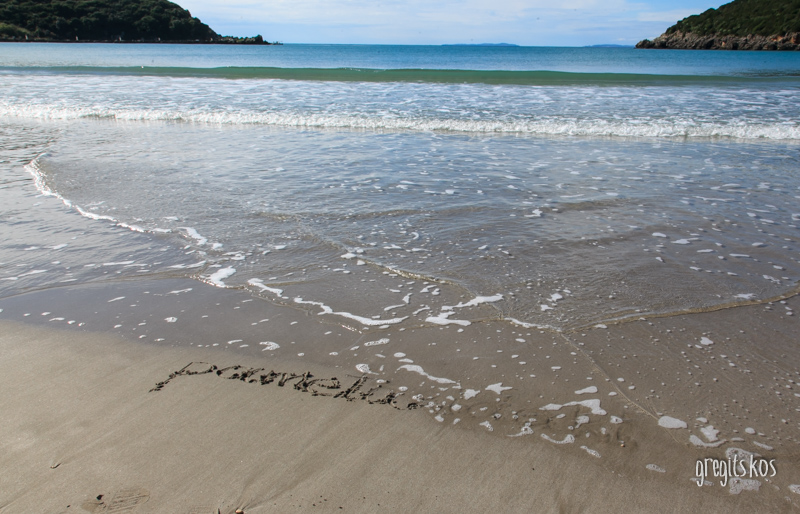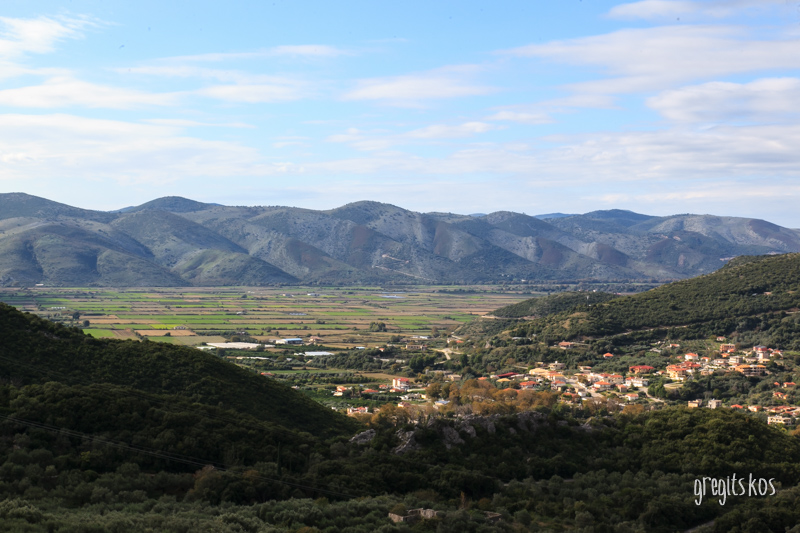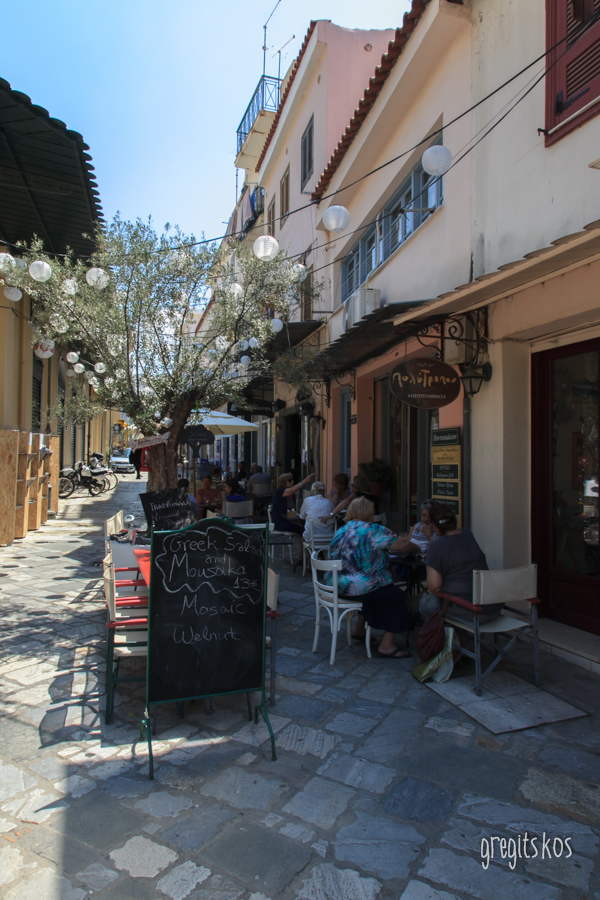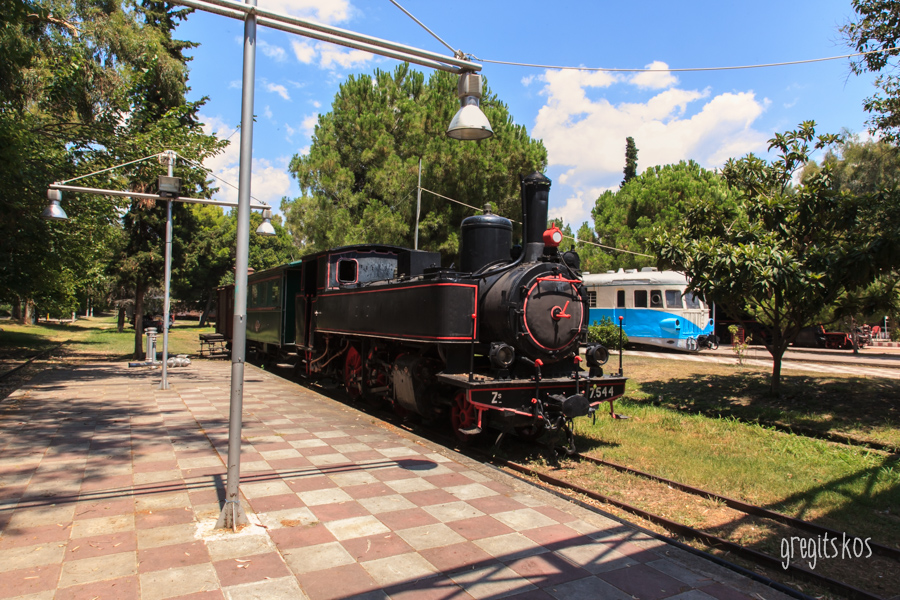
“Hooked up in pleasure”
 “Agkistro” (= hook ), a small village close to the borders with Bulgaria, was picked as a relaxing destination during our Christmas holidays and it very much justified our choice! So here are all the secrets so that you can enjoy what it offers!
“Agkistro” (= hook ), a small village close to the borders with Bulgaria, was picked as a relaxing destination during our Christmas holidays and it very much justified our choice! So here are all the secrets so that you can enjoy what it offers!
So we set off from Veria, on the second day of Christmas, choosing to follow the road to Kerkini and Ano Poroia. On our stop at Poroia we came upon the village’s Christmas feast: Every year, they organize the “Gournosfagia” ( slaughtering of pigs) at the main square. Smoked piglets, frying pancakes, crumbs and” tsipouro” are treated to visitors accompanied by music of course! We drank our coffee at “Nastou View Hotel” at the highest point of the village, enjoying a wonderful view of Lake Kerkini.
A 40 ‘drive led us to “Agkistro” through Promachonas. “Agkistro” is the northernmost village of the prefecture of Serres, built at the foot of the homonymous mountain (Mount Agkistro or “Tsigelli” at an altitude of 1,294m), near the well-known “Fort Rupel”, right next to the border line with neighboring Bulgaria. In the “Wooden Village”,  Our hotel welcomed us with smiles and our good mood was enhanced when we got into the warm rooms (built with wooden trunks), fireplaces and exposed roofs. An intimidating environment especially when it got dark showing up the impressive Christmas decoration!
Our hotel welcomed us with smiles and our good mood was enhanced when we got into the warm rooms (built with wooden trunks), fireplaces and exposed roofs. An intimidating environment especially when it got dark showing up the impressive Christmas decoration!
Time to eat, and since we came all the way, we had to try the homegrown trout cooked on charcoal. The waters of “Strymonas” river feed the village’s fish farm (you can navigate through the tanks), which also has a tavern that is open since 1977 (PEKAM). In its vintage decor, as if the we were transferred back in time, we enjoyed our fresh fish! The smoked trout was very delicious!
 After coffee and chatting in the main building of “Wooden Village”, Antonia, the polite receptionist, fully enlightened us about the region! In the evening we went to the “Eight” café /bar of “Paroraia” Boutique Hotel . A wonderful place with cozy atmosphere and fine music! A must! We spent several hours of our 2day vacations on its sofas, around the fireplace enjoying our coffee, tea or drink!
After coffee and chatting in the main building of “Wooden Village”, Antonia, the polite receptionist, fully enlightened us about the region! In the evening we went to the “Eight” café /bar of “Paroraia” Boutique Hotel . A wonderful place with cozy atmosphere and fine music! A must! We spent several hours of our 2day vacations on its sofas, around the fireplace enjoying our coffee, tea or drink!
Second Day: Morning walk in the village and visit to “Fort Rupel”
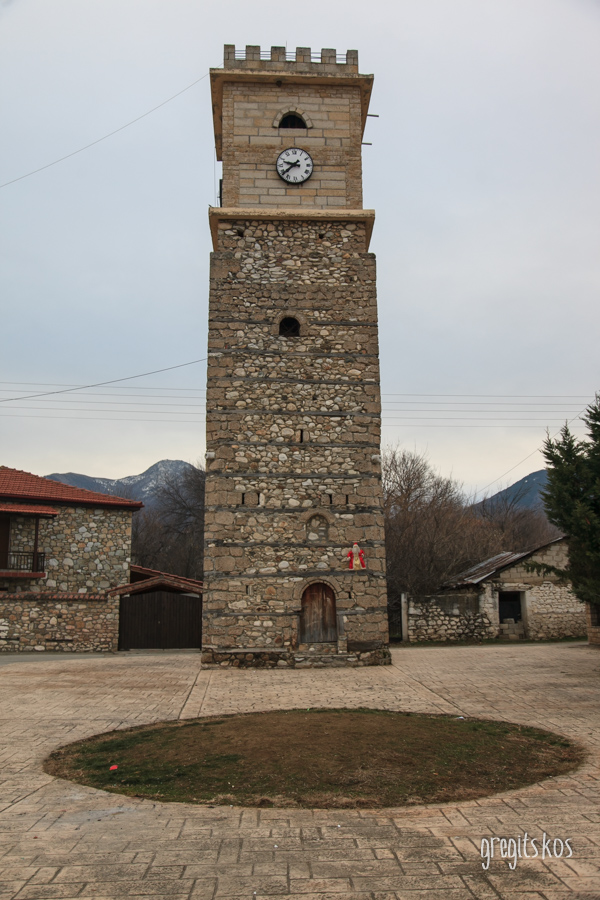 On our walk, we came by the square which is dominated by the stone, Byzantine tower, which was used as a prison or even as a place of execution during the Ottoman domination. Today it is just a clock, depicting the local architecture.
On our walk, we came by the square which is dominated by the stone, Byzantine tower, which was used as a prison or even as a place of execution during the Ottoman domination. Today it is just a clock, depicting the local architecture.
Following the signs from “Promachonas” (14km away), we drove to the “Fort Rupel”, incident to the resistance and heroism of the Greeks during the war with the Germans. It was never occupied, but was surrendered after the capitulation to the Germans on 10/4/1941. The fortress today is accessible (free of charge), daily from 9.00 to 13.00 (entrance accepted until 12.30). The tour includes first a brief presentation of the external space, a brief analysis of the military connections in this area at that time, and finally a visit into the “deep” land with the shelters, blockhouses and endless underground galleries. Impressive!
 “Agkistro” and the “hamam”(Turkish word for the steam bath- the contemporary spa) are absolutely connected to each other! A little further below the “Wooden Village” are the “hamams” of the village. The Byzantine hamam, the oldest Turkish bath, dates back to 950 AD. And is characterized as a real monument. In recent years, it has been expanded, utilized and framed by additional modern halls and a community hotel (“Hamam”,hamamagistro.gr, tel. 2323041420). It is built right next to the Byzantine hamam. Upon appointment (make sure to book it earlier in the day), you can enjoy your steam bath in a mysterious atmosphere: from the surrounding hot springs there is a steady flow of hot water at 37-38 ° C creating dense water vapor. One can see the dim light of candles (electricity does not exist in the old hamam, but there are newly built as well). The thermal waters spring through the rocks of Mount Agkistro and, as they travel to the surface of the earth, acquire the metallic components, which are mainly to be credited for their healing properties. The benefits of using the hamam include, among others, the relief of musculoskeletal pain, relaxation of the muscles and improvement of skin conditions. The odorless water effectively releases the toxins from the body and embellishes the skin. The hot springs of Agkistro are considered among the best in Europe, and are open for 365 days, 24 hours a day. Just take with you a swimsuit, a towel, slippers and a cap if it’s winter) !!!
“Agkistro” and the “hamam”(Turkish word for the steam bath- the contemporary spa) are absolutely connected to each other! A little further below the “Wooden Village” are the “hamams” of the village. The Byzantine hamam, the oldest Turkish bath, dates back to 950 AD. And is characterized as a real monument. In recent years, it has been expanded, utilized and framed by additional modern halls and a community hotel (“Hamam”,hamamagistro.gr, tel. 2323041420). It is built right next to the Byzantine hamam. Upon appointment (make sure to book it earlier in the day), you can enjoy your steam bath in a mysterious atmosphere: from the surrounding hot springs there is a steady flow of hot water at 37-38 ° C creating dense water vapor. One can see the dim light of candles (electricity does not exist in the old hamam, but there are newly built as well). The thermal waters spring through the rocks of Mount Agkistro and, as they travel to the surface of the earth, acquire the metallic components, which are mainly to be credited for their healing properties. The benefits of using the hamam include, among others, the relief of musculoskeletal pain, relaxation of the muscles and improvement of skin conditions. The odorless water effectively releases the toxins from the body and embellishes the skin. The hot springs of Agkistro are considered among the best in Europe, and are open for 365 days, 24 hours a day. Just take with you a swimsuit, a towel, slippers and a cap if it’s winter) !!!
 Two days are not enough to try the village taverns. We ate tasty zea pasta in “Don Pablo” but we did not get to taste the venison and other dishes of “Kyra Maria” (tel: 2323041144) and the kitchen of “Wooden Village”, for which we heard great comments! Check out the page: http://www.agistro.com/
Two days are not enough to try the village taverns. We ate tasty zea pasta in “Don Pablo” but we did not get to taste the venison and other dishes of “Kyra Maria” (tel: 2323041144) and the kitchen of “Wooden Village”, for which we heard great comments! Check out the page: http://www.agistro.com/
“Agkistro Action”, the first Alternative Tourism Office in Greece, organizes tours at the decommissioned northern fortifications (Fortresses Line of Metaxas). At the same time, “Agkistro Action” organizes activities in nature (cycling, mountaineering, archery, kayaking, Fliyng fox, etc.). A very good choice! Get detailed information on their highly organized website: www.agkistroaction.gr or call (tel. 2323043033 & 6980138846)
If you would like to bring home with you some local products visit the “Traditional Product Shop”, just before entering the village (tel. 2323041210 & 6974458809). We , on the other hand drove up to “Irakleia” (20 ‘) to get the original “Tzoumagias sausages”! (In Coco)
We bid farewell to Agkistro and the people we met there, full of expectations for our next visit! Why not have come back here in spring!
The title ” Hooked up in pleasure” was “stolen” from the name of the homonymous cafe in the village! We loved it!
The beginning of the history of the village is lost in the depths of the ages. During the reign of Philip II of Macedonia, in the 4th century BC, iron and gold mines of Mount Agkistro, were providing valuable material, along with the mines of Pangaio, to the campaign of Alexander the Great in Asia. This era is also marked by the discovery of the warm waters that flow from the mountains, resulting in a strong human presence in the area for the centuries to come. The stone bath dates back to the Byzantine era, as well as the tower in the center of the village, which served as a clock in the 14th century. During the Ottoman domination the village was called “Tsigelli”, with the bey (Turkish ruler) of the region and its harem enjoying the warm waters of the bath, as the monument was the private hamam.
Agkistro has suffered severe disasters in all the difficult moments of modern history (Balkan Wars, World War I, World War II, and Civil War). Due to its particular geopolitical position, is has been a militarized zone for many years. At present there are about 400 residents in the village who are mainly engaged in agriculture, livestock, beekeeping, logging, and tourism.
In the summer they organize the three-day cultural festival “Without Frontiers” (1st week in August) with concerts by popular Greek artists, dance groups and good local food, while on the third day, there is a River Party at the Mills
We enter the hamam “prive”, by appointment, for half an hour or for an hour or even more if we want. We pay € 6.00 per person for half an hour (i.e. if we are a company of 4 people and we want the steam bath to ourselves for 1 hour, then we will pay a total of 40 €). The water is poured into a pool of 3×3 meters and depth of 1.20 m. At the peak hours it is difficult to find a free steam bath, so many people are even more comfortable in the post-hours! Attention: To the Byzantine Hamam priority is given to the residents of the “Hamam Hotel” and to those who stay overnight at the village. If it is winter, make sure you are warmly equipped because the new hamams are outside the hotel, so you have to go out and walk to the building or the car!
You can also get a massage. Ask for the services at “Hamam Hotel”
TIPS:
Distance
– Agkistro – Thessaloniki : 122 km
– Agkistro – Serres : 50 km
– Agkistro – Veroia: 191 km
– Agkistro – Rupel: 16 km, Agistro – Poroia: 50 km
Download the guide http://www.agistro.com/images/maps/Guide_FINAL.pdf
Keep in your mobile phone the site: http://www.agistro.com Find useful information about everything in the village!




